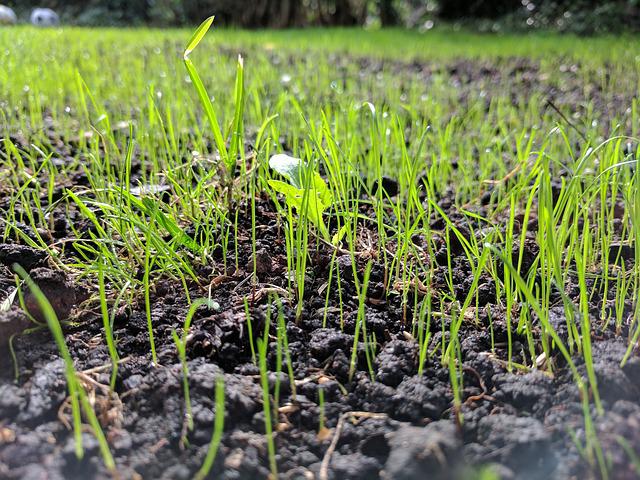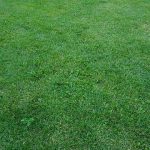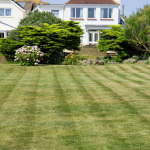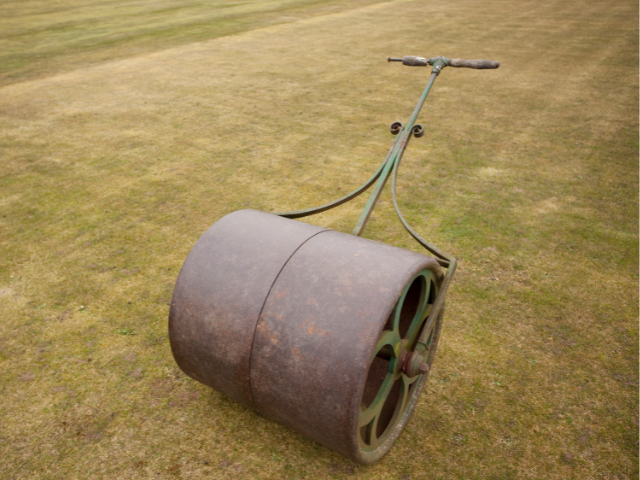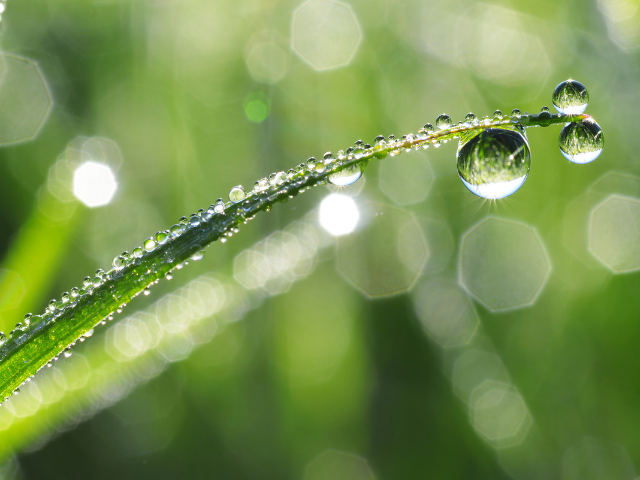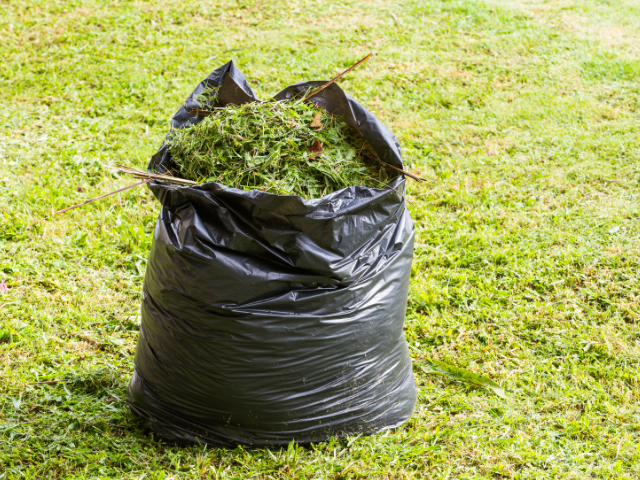Even lawn seeds do not last forever. We show how you can use a germination test to test how good the germination capacity of the seed is and whether the seeds can still be used.
Surely it happens occasionally that you do not have the time and leisure for perfect seed storage. Suddenly, an indefinite time has passed and it is not clear whether the lawn seeds are still durable. We explain how to find out if the lawn seed is still any good with the help of a germination test.
How to Store Grass Seed
With good storage, you can still use lawn seed for at least three years. After about three years, the germination capacity of the seeds decreases by about 10% per year. However, this storage period only applies if the seeds are stored in a species-appropriate manner, i.e. in this case cool, dry, at a constant temperature and humidity, and in dark, breathing containers such as cloth bags or paper bags. After the fifth year at the latest, however, seed mixtures are finally overstored. Some will still germinate, but the more sensitive varieties may be missing and the resulting lawn would look incomplete. Our matching special article explains in detail how to store lawn seed properly.
Tip: RSM-certified varieties and seeds achieve the highest quality standards in Germany and can be stored better than non-certified mixtures due to their particularly careful production and control. Certified seed mixtures also include the seeds from our Plantura lawn family.
How to Recognize the Germination of Lawn Seeds?
With a germination test, it is easy to see if there is still life in the seeds. But the germination test takes some time. However, it is worth spending it, because it takes much longer to make up for a failure in sowing. Before you proceed to the germination test, it is worthwhile to take the seeds once closely under the magnifying glass and in your hand.
Incorrectly stored, old seeds smell rotten and no longer fresh. Fresh seed has a certain spice in its scent that is unmistakable. And while fresh seed feels pointy and dry, overstored seed yields when pressed and you can also feel the moisture in the seeds. It’s even possible that the seeds have already begun to germinate or are covered in black or gray spots, or mold. Therefore, if you find lawn seed in such a state, it is not even worth doing another germination test.
What is a Germination Test and When is It Useful?
In a germination sample, some seeds are sown experimentally under good germination conditions to observe whether and if so, how many seeds still germinate. Especially with lawn seed, such a sample is very useful, because it is always composed of different genera, species, and varieties of grasses and these are not all equally long storable. If a relevant part of the seeds does not germinate at all, lawn seed should no longer be used, because it is then very likely that an important part of the mixture will be missing in the finished lawn.
Tip: If you test the germination capacity of vegetable seeds in a germination test, it is sufficient if, for example, 50% of the seeds germinate. The germination percentage of vegetable seeds is usually lower than that of lawn seeds anyway, and in this case, there is no risk of missing an important species or variety. You can then simply sow more of the vegetable seeds in cultivation. However, in the case of lawn seeds, almost all tested seeds should come up.
Testing the germination of lawn seed makes sense if you still want to use old seed or even if the seed is of indeterminate quality, for example, due to missing information on the packaging or the use of donated leftovers. Time for a germination test is most likely before the planned sowing, for example in winter. In this way, in case of failure, it is still possible to take care of new lawn seeds in peace, without missing the perfect time for sowing.
If the seed still makes a good impression visually, haptically, and olfactorily, you can get certainty about the germination capacity with a germination test.
Creating a Germination Test for Seeds: How to Test the Germination Capacity of Seeds
To test the germination capacity of turf seeds, it is essential that good germination conditions prevail for the seeds in order to obtain an unadulterated result. Only then do all viable seeds really go through all eight stages of the germination process from water uptake and swelling to bursting of the seed coat, formation of radicle and cotyledon, and the first photosynthesis.
The best germination conditions for lawn seeds can be found directly afterward in the following step-by-step instructions.
Create a germination sample step by step:
- We recommend filling a container with good growing soil such as Plantura Organic Herb & Seeding Soil. The container should have as large an area as possible to test as representative a quantity of seed as possible.
- Mix the seeds thoroughly once, as the seeds will sort by size unnoticed during storage.
- Now spread the soil, moisten it and press it a little, then spread the seeds on it.
- Make sure that the seeds are spaced sufficiently so that later you can really understand what proportion of the seeds have germinated.
- If necessary, cover the seeds very thinly with soil, press them down as well and moisten the whole thing with a spray bottle.
- Then place the sample in your home to prevent birds or mice from showing interest in the seeds and rendering your test useless.
- Now it’s a matter of waiting: fast-germinating grasses such as German ryegrass (Lolium perenne) will show their cotyledon after only 7 to 15 days. The most time needed for germination is forage grass (Poa supina), which germinates only after 14 to 24 days. So before this time is up, you should not do a final check to see what percentage of the seed has actually germinated.
- Check the germination pattern after 24 days. If almost all of the seed has sprouted, the seed can still be used. However, if more than about 10% of the seeds do not germinate at all, it makes sense to purchase fresh seeds for successful sowing in the garden. In our store, you will find, for example, our RSM-certified Plantura lawn seeds.
Tip: Cover the germination sample with some foil, in which you make many small holes. This will keep the moisture and heat better and germination will be even faster. You should not place a germination sample with foil in direct sunlight, otherwise, too high temperatures can develop. Also, be sure to air the foil daily to avoid mold.
Best germination conditions for lawn seeds: This is how lawns germinate best
- Always keep the seeds moist: The first step in germination is water absorption. This increases the volume of the seed and enzymes and important process chains for providing energy from the reserve substances in the seed are triggered. Turf seeds must not be allowed to dry out during the entire germination process, otherwise, the entire process is aborted and the seedling dies. It is easier to keep seedlings moist if they are covered very thinly with soil and pressed down well. This is the best way for the seed to absorb water from its environment.
- Use loose, crumbly soil: Turf seed needs a sufficiently good oxygen supply to germinate. This is because, like adult plants, seeds engage in cellular respiration throughout their life and, of course, especially during germination, in order to provide energy from stored reserve materials. In this process, oxygen is absorbed and carbon dioxide is released. A clayey, compacted soil will make it difficult for lawn seeds to germinate or even prevent germination. It is best to use fine-textured, low-nutrient growing soil such as our Plantura Organic Herb & Seed Soil.
- Perform the germination test at 16 – 23 °C: Although lawn seeds germinate from at least 8 °C, their optimum germination temperature is much higher. However, your germination test should not be too warm either, otherwise, germination will be delayed.
- Note that lawn seeds are light germinators: The absolute upper limit for lawn seeds is to cover them with half a centimeter of soil. This is because, like many other seeds, the germination processes in the seed are only activated when so-called photoreceptors of the seed are excited by exposure to light. The connected phytochrome system then ensures the start of germination. For this reason, lawn seeds should not be covered with soil at all or only minimally.
